15 September 2016
Now in his eighties, Peter Eisenman has published another of his well-marinated books, in other words writings that have been soused in brine for decades to cleanse them of any impurity. After the book on Giuseppe Terragni, announced as far back as 1978 and then miraculously brought out in time for the centenary of the architect from Como,1 we now have one devoted to Palladio,2 published last December after almost thirty years of gestation. The title: Palladio Virtuel. In many ways it is a return to the beginnings of his extremely long career, as if to prove the truth of Karl Kraus’s motto, “the origin is the goal.”
In the Middle of the 20th Century
Exactly half a century ago, in that fateful year of 1966, when the ways of architecture were about to change radically under the blows dealt (unwittingly) in unison by Robert Venturi in the US (Complexity and Contradiction in Architecture) and Aldo Rossi in Italy (L’architettura della città), a forty-year-old from San Francisco brought out a slim but precious book, published by Penguin in London, with a title as curt as a pistol shot, Palladio:
“All over the western world, hundreds of thousands of houses, churches and public buildings with symmetrical fronts and applied half-columns topped by a pediment descend from the designs of Andrea Palladio. He is the most imitated architect in history, and his influence on the development of English and American architecture probably has been greater than that of all other Renaissance architects combined.”3
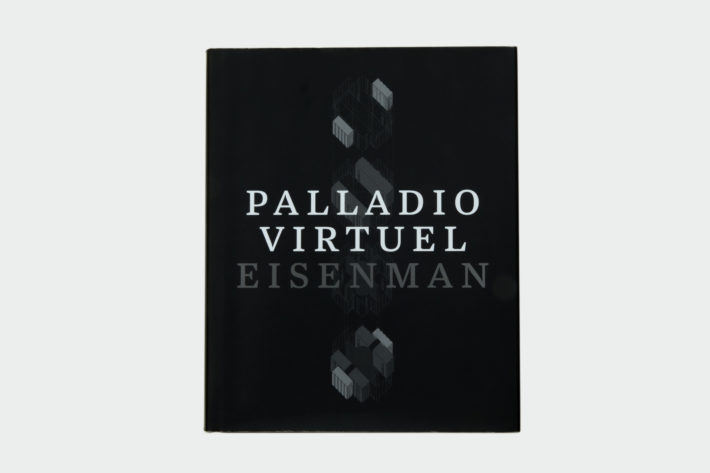
Today that forty-year-old is almost a hundred: James Sloss Ackerman had studied in New York under two distinguished German émigrés, Richard Krautheimer and Erwin Panofsky, before making his way up the Italian pensinsula with the American army during the Second World War, on a journey that was a return to the origins of the Italian Renaissance (Gio Ponti also discovered Palladio as a soldier, camping with his comrade-in-arms of the corps of engineers in several Palladian villas during the First World War and going on to become the leader of Milanese neoclassicism in the twenties, but that’s another story). So Ackerman, after reviewing the whole of Palladio’s constructed and theoretical work in just a hundred pages, dispensed irrefutable and often definitive judgments like this: “Northerners like the cerebral, abstract character in Palladio,” and this was especially true of Protestants. It was only Aldo Rossi, however, who noted, in one of his last public speeches, a fundamental detail that, while it reflected the view of the Californian historian, also and above all offered a glimpse of two contrasting visions of architecture: “And in reality, writes Ackerman, Palladio seems to have been repelled by the bizarre element in the work of Michelangelo.”4 In fact when the architect from the Veneto went to Rome to study antiquity with his mentors, first Gian Giorgio Trissino and then Daniele Barbaro (both translators and experts on grammar), he never made a drawing or a sketch of a work by Michelangelo: Palladio’s bent for syntax was poles apart from Michelangelo’s asyntactic approach. According to Manfredo Tafuri, a longtime associate of Eisenman, “Palladio’s ars combinatoria criticizes the concept of the type and presents itself as an open structure, a logical concatenation of experiments on the aggregation of spaces, on the syntax of structures, and on the composition of pivotal elements, made possible thanks to grammatical purification. For those who love traditional historiographic definitions, we can say that Palladio in this way barred access to architectural Mannerism in the Veneto region, demonstrating at the same time that the philological use of Latin grammar does not thwart open-minded experimentalism in the least.”5
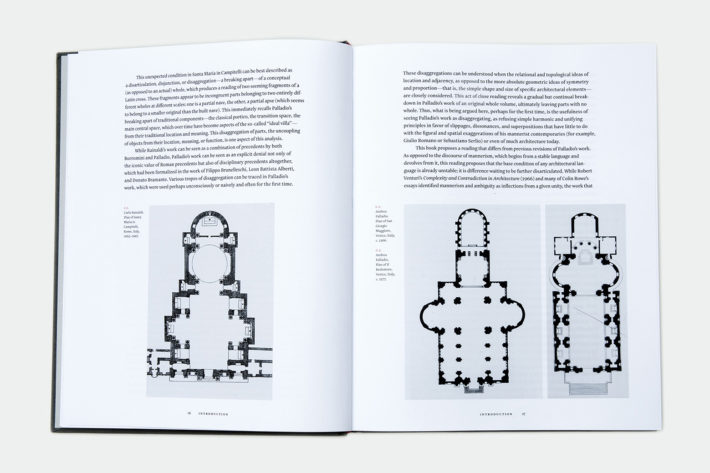
Palladio versus Michelangelo, grammatical experimentalism versus Mannerist experimentalism: it should not be forgotten that just two years ago Eisenman made the keenest criticism of the Biennale directed by Rem Koolhaas, Elements? This is what he had to say: “Any language is grammar. So, if architecture is to be considered a language, ‘elements’ don’t matter. So for me what’s missing (from the show), purposely missing, is the grammatic. Koolhaas doesn’t believe in grammar.”6 It may be a coincidence, but among all the great Italian architects who have always literally thronged Eisenman’s writings and his courses at Yale, from Brunelleschi to Alberti, from Bramante to Vignola and Palladio, the only one he has never dealt with directly is Michelangelo. By contrast, Koolhaas’s only personal contribution to his Biennale of 2014 was a short text in which he explained how important the Biblioteca Laurenziana had been for him, written to accompany some photographs of the monument in Florence taken by Charlie Koolhaas and shown in Monditalia at the Arsenale. The lesson that the Dutch architect has drawn from the Laurenziana consists in the realization that “Mannerism is a dish best eaten cold and in small doses.”7
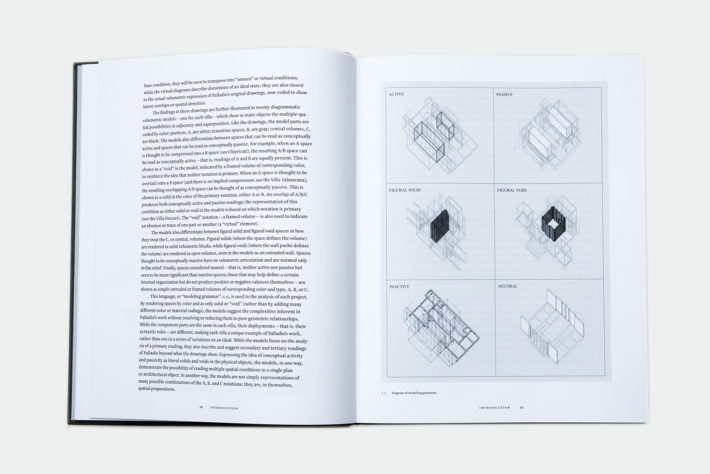
Architectural Principles in the Age of Humanism
According to an interested, ironic and somewhat cheeky onlooker like the anticlassical (because pop) historian Reyner Banham, in postwar Britain people were looking for the origins of modern classicism in the Italian Renaissance, where: “Its symbol was the Vitruvian Man, its slogan ‘Divina Proporzione,’ its hero Palladio, its prophet—quite coincidentally—Rudolf Wittkower.”8 Born in Berlin, Wittkower had fled to London in 1933 along with the rest of the Warburgian clique and in 1949 had published his best-known book,9 in which he claimed that the Renaissance had its alpha in Leon Battista Alberti and its omega in Palladio, devoting the whole of the second part of the book to the latter. Wittkower was in fact one of many German Jewish intellectuals in exile who had found a new homeland in the Italian Renaissance: among the others were Krautheimer, Panofsky, Gombrich, Warburg, Saxl and Kristeller.10
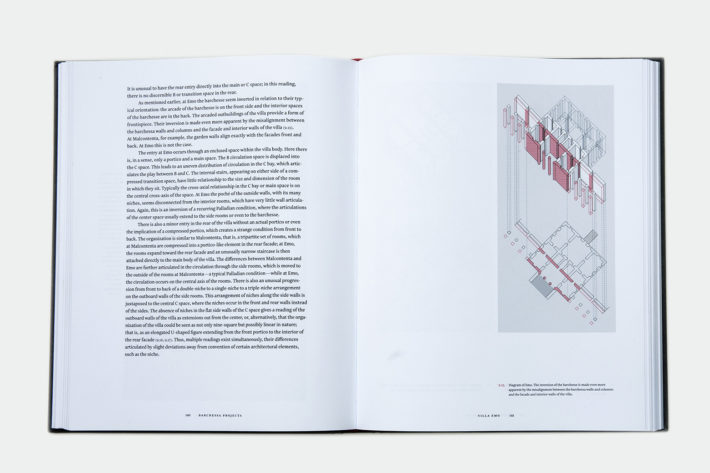
This was the context in which our Peter Eisenman came onto the scene. Born in Newark, New Jersey, like Philip Roth, Jerry Lewis, Allen Ginsberg and Richard Meier (his cousin, in fact), he was a gifted member of the swimming team at Cornell and then a student at Columbia and finally in England, at Cambridge University, which he attended from 1960 and 1963, leaving with a PhD. Eisenman does not have an upper middle-class background: he is from New Jersey, the armpit of America, like Frank Sinatra and many others who immediately went to seek their fortune in Manhattan, and untroubled by problems of exile (his family arrived in the USA in the 19th century and he fought in the Korean War), having if anything only to deal with that of getting himself accepted by the British academic community. In any case, it was while Eisenman was at Cambridge that the second edition of Architectural Principles in the Age of Humanism (1962) came out, extensively rewritten by its author, “by far the most important contribution for evil as well as good by any historian to English Architecture since Pioneers of the Modern Movement [that had been written by another German Jewish exile, Nikolaus Pevsner], and it precipitated a nice disputation on the proper uses of history.”11 Thus Britain saw the emergence of two alignments in architecture, functionalist and Neo-Palladian. Eisenman, in the years of Swinging London, of the early Beatles and Rolling Stones, spurned the pop of the Independent Group or Archigram, orienting himself toward classicism, and not just because of its academic pedigree: the tutor of his doctoral thesis was another admirer of Palladio, Colin Rowe, who in turn had written a thesis under Wittkower’s supervision on Inigo Jones, the architect who first brought Palladianism to England in the 17th century. In essence, if Palladio is seen today as the classical architect par excellence, it is largely because Palladianism owes its worldwide spread much more to the English architecture of the 18th century than to that of the Veneto in the 16th. Wittkower’s posthumous book demonstrates this fully, bringing into focus key figures like Lord Burlington,12 who acquired the autograph drawings of the architect from Vicenza and brought them to London, where they still are today. In a certain sense, we could even say that Palladio is an English invention. And it is in fact through English spectacles that Eisenman looked and still looks at Palladio.
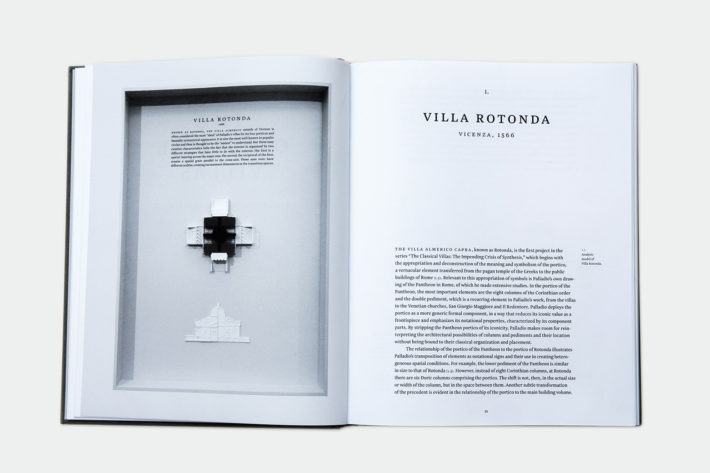
Italian Journey
In 1961 Colin Rowe accompanied his graduate student on a long journey through Italy that retraced the old itineraries of the Grand Tour, from North to South. Eisenman then went on by himself as far as Palermo, where he would spend Christmas and discover another passion that he has snobbishly cultivated over the years, soccer.13 Today he is still an avid reader of La Gazzetta dello Sport and supporter of Como, Terragni’s city, as well as a collector of shirts from Serie A, Serie B and Lega Pro. Rowe had written his most famous essay in 1947, The Mathematics of the Ideal Villa, in which he made a comparative analysis of the plan and elevation of Palladio’s Villa Malcontenta with those of Le Corbusier’s Villa Stein at Garches. He deduced that both villas, notwithstanding the historical and geographical distance that set them apart, had the same spatial composition based on precise and easily recognizable geometric principles, especially if the representation of the villas was “pared down” by drawing them “in wireframe,” i.e. through spare linear diagrams. The same procedure had been followed by Wittkower in a long essay on Palladio published in two parts in 1944 and then together as the third chapter of his Architectural Principles in the Age of Humanism in 1949. In 1961 this book was reprinted in a revised and corrected edition that Eisenman devoured, adopting its specific method of representation but speaking of diagrams and not schematized plans as Wittkower does. In this connection, Pier Vittorio Aureli has written that “the drawing of plans traced schematically in wireframe suggests the generalizing potential, i.e. the intrinsic seriality of the architectural principle: the plan following the pattern ABCBA. Not only does the use of the diagram sum up the idea, i.e. the content of the architecture and the configuration of the architectural object, in a drawing; the reduction of the architecture to a diagram permits a comparative reading along the lines of the Warburgian tradition.”14 The diagram, which was certainly not invented then but began to spread out more and more widely from Great Britain from that moment on, although with mixed fortunes, makes no sense if it is not analyzed in sequence. Thus any building has value as a moment of verification of universal theoretical principles treated on each occasion not as simple variations on a fixed architectural ideal but as different aggregations that have the same basic elements (squares, rectangles, circles, etc.).

Wittkower’s principle is the same one as lies at the base of Palladio Virtuel, which has come out around seventy years after the German historian put forward his theory; a theory to which Eisenman has been far more loyal than the British-born Rowe, who started to move away from it in the early seventies. In any case, Rowe, like all good teachers, has left an indelible mark on the personality of his pupil. During their Italian journey, he drew the attention of the young American architect to the more perceptual aspects of architecture, the ones that Le Corbusier called the “regulating lines”: in front of a Palladian villa Rowe asked Eisenman to tell him exactly what he did not see in a façade, leaving him flabbergasted. What cannot be seen is the presence of geometric and mathematical lines or relationships that are only visible if experienced through an effort of abstraction and the development of a wholly conceptual sense.15 In addition, the British architect had proved particularly domineering in steering Eisenman away from a very precise period in history, that of Mannerism, the alter ego of the Renaissance so dear to Wittkower, going so far as to forbid him while they were in Rome—origin and international capital of the baroque—from visiting the masterpieces of Bernini, Borromini and Pietro da Cortona—a truly grave imposition. It is no accident that Palladio Virtuel starts out from the work of which Eisenman is most fond, the Roman church of Santa Maria in Campitelli (1663-67), designed by Carlo Rainaldi, the only architect who “accepted an outmoded fashion”16 and thus was able to find a synthesis between Palladian motifs and those of the great Roman triad. Although constructed about a century later, the plan of Rainaldi’s church is the first illustration in the book, preceding those of Palladio’s Venetian masterpieces of San Giorgio Maggiore (Venturi’s favorite17) and Il Redentore. Santa Maria in Campitelli is described in the book as a “disaggregation of parts, the uncoupling of objects from their location, meaning, or function.”18 The admiration and identification of the American architect is clear here. A prominent member of the generation of critics of functionalism, Eisenman shares with Robert Venturi and Aldo Rossi and others19 the love of Palladio despite the very different character of their architecture. Why? A very summary response would be to say that all three—and not them alone—are mannerists of the modern or academics (while the anti-academics like Bruno Zevi prefer the asyntactic Michelangelo and Borromini), but the underlying reason is another: Palladio is above all a master of abstraction, especially from the Anglo-Saxon viewpoint, and abstraction necessarily implies a belittlement of the value of function and an emphasis on form—it is no coincidence that all three have been accused of formalism. In the celebrated Rotonda in Vicenza, the dome, “like the temple front, […] is divorced from functional allusions to become a symbol of grandeur,”20 and it will have been for this reason too that a proposal has recently been made for the chef Carlo Cracco, also from Vicenza, to open a restaurant in the villa.
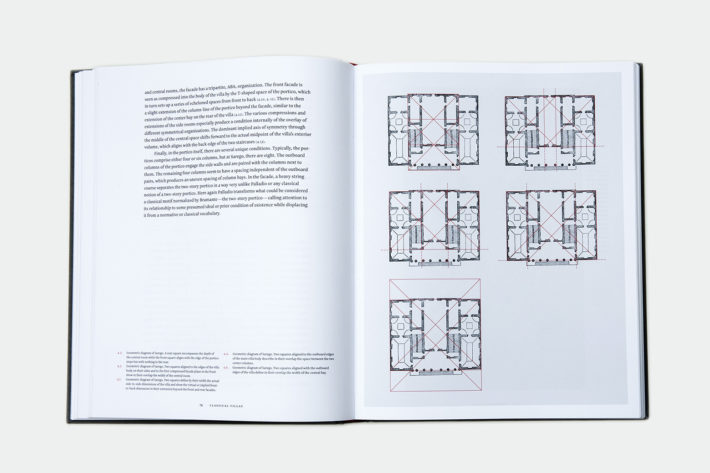
In addition, the preferred means of giving suitable expression to abstraction is the book, which has a material, physical and paper-based component, but also boasts a significant immaterial or conceptual dimension, thanks in particular to its drawings, and so we find ourselves back at the starting point. Palladio’s vision has been handed down chiefly through the summation of his ideas published in 1570, The Four Books of Architecture, where for the first time the author’s own architecture was illustrated by means of simple line drawings and not the lavish engravings of Michelangelo or Bernini, easy to ape but difficult to emulate. In other words, abstraction is more concrete as it allows a greater degree of freedom in interpretation and in adaption to the context, which is why there are Palladian buildings in India, Scotland or Virginia, where an American president personally designed a Neo-Palladiana villa—Thomas Jefferson’s Monticello which even appears on the reverse of the nickel—and as a consequence in Italy too, where much of the neoclassicism is Neo-Palladian, as in the vast body of Giuseppe Valadier’s work. Moreover, this extreme adaptability has led as acute an art historian as Sergio Bettini to speak of a clear “poetics of the open form” in Palladio. After all, in 1962 both Eisenman, hard at work on his thesis,21 The Formal Basis of Modern Architecture, and Bettini while writing his essay,22 unwittingly had an unwanted third party at their elbow: Umberto Eco’s The Open Work, whose original subtitle can be translated as “Form and Indeterminacy in Contemporary Poetics.” Obviously the theoretical basis of these parallel investigations of architecture and literature were earlier structuralist studies, in particular those of Noam Chomsky in the case of Eisenman, whose concepts of “modelling grammar” and “generic form” owe a great deal to the philosopher from Philadelphia’s studies of syntax and generative grammar.
Virtual
Thus Palladio Virtuel has its focus in the formal analysis in sequence of Palladian villas. Making constant use of axonometric projection as the method of representation, or rather of the axonometric cutaway (which has always been the more abstract method favored by the European avant-gardes), Eisenman adds another level of complexity, the virtual dimension. In his view Palladio bestows a grain on empty space, an essentially heterogeneous consistency: “The addition of a grain and the possibilities of superposition and overlapping spatial layers introduce into architecture a virtual—as opposed to literal—condition in space.”23 We are still within the bounds of an essentially linguistic framework (literal, syntax, syntagma, grammar, etc.), that of Chomsky and of Jacques Derrida, the author of De la grammatologie (1967), today so scornfully dismissed as out of date—see Alejandro Aravena’s Biennale currently under way.
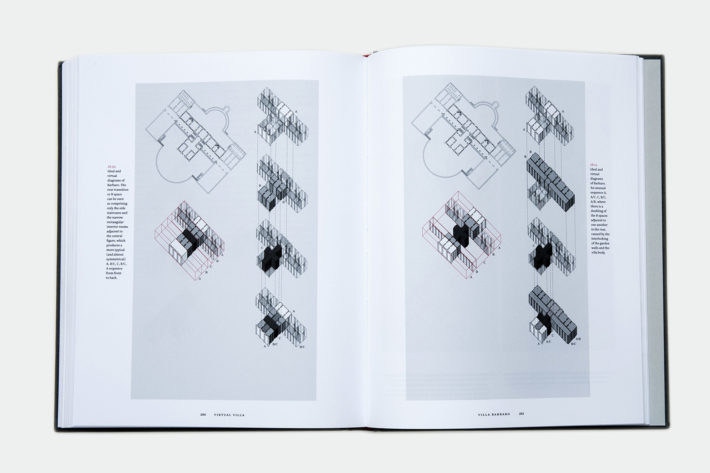
But there is another possible interpretation of the virtual dimension of architecture that no longer has anything to do with the digital infatuation of the nineties, when Eisenman acted as midwife to Greg Lynn’s first experiments with biomorphic forms. Eisenman now pays close attention to Pier Vittorio Aureli’s view of Palladio24 and through him has turned back to Manfredo Tafuri, the man who had ousted Rowe from Eisenman’s Pantheon in the seventies. Tafuri wrote: “Palladio’s architecture […] assumed a precise historical task. It created a virtual reality that contrasted with immediate reality: this is especially evident in the context of the lagoon, where Palladio’s works live thanks to their ‘estranging’ power. At the same time, these works preserve the nucleus of the humanist hypothesis in an absolutely pure form. The harmony of Palladian architecture thus projects itself beyond the present, drawing a horizon of meaning that goes beyond the sixteenth century […].”25 This is why Palladio Virtuel, like Rainaldi, goes along with an “outmoded fashion” which for this very reason has a radically estranging power with regard to the drift toward informalism and populism currently taking place in architecture. This is the grammatical counter attack26 that Peter Eisenman is orchestrating in his disciplinary field, ever more lacking in theoretical lodestars and therefore increasingly obliged to give in to the fashions of the day.

Geometric diagram of Sarego. A rear square encompasses the depth of the central room while the front square aligns with the edge of the portico steps but with nothing in the rear.
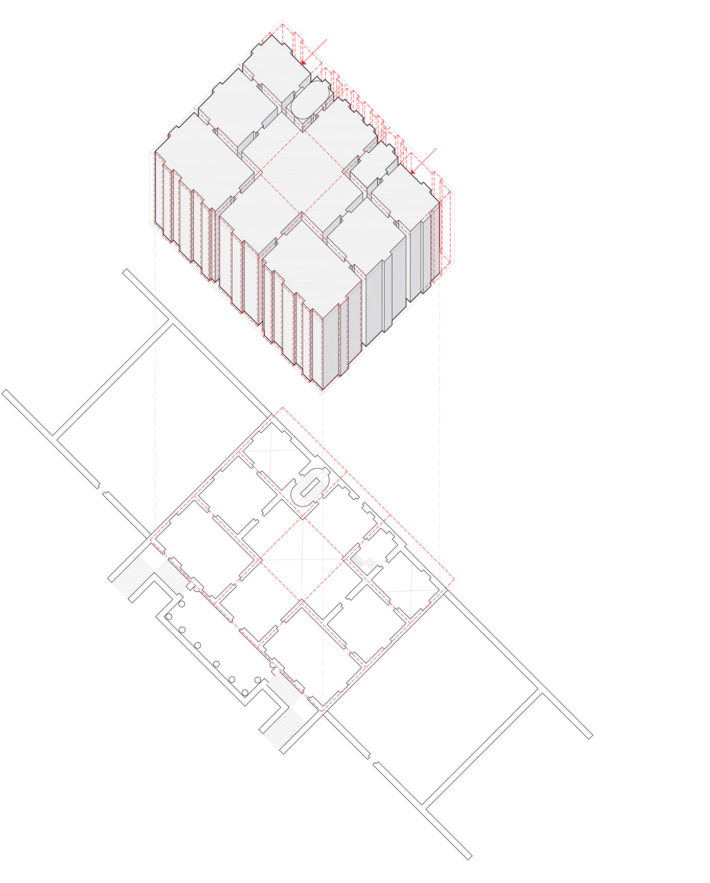
Diagram of Foscari. The compression of the “virtual” rear portico into the rear facade of the villa is registered in the compression of the cruciform and the decreasing dimension of the side rooms from the front to back.

Diagram of Badoer. In the front of the villa, where the portico is pressed into the main building volume, the poché is interrupted with niches. In the rear of the villa body, where the portico is outboard, the poché is continuous on the sides.
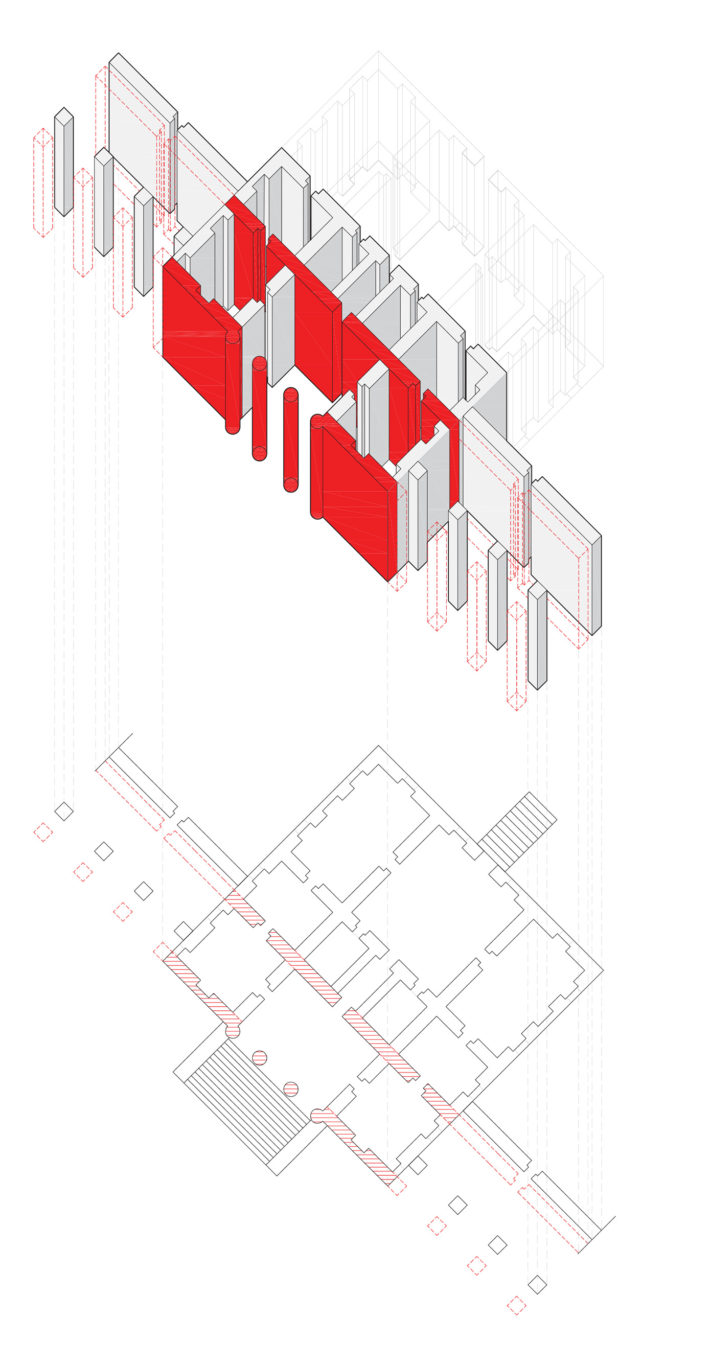
Diagram Emo. The inversion of the barchessa is made even more apparent by the misalignment by the barchessa walls and columns and the facades and the interior walls.

Ideal and virtual diagrams of Barbaro. An unusual sequence A, A/C, C, B/C, A/B where there is doubling of the B spaces adjacent to one another in the rear, caused by the interlocking of the garden walls and the villa body.
Notes
1 Peter Eisenman, Giuseppe Terragni: Transformations, Decompositions, Critiques (New York, Monacelli Press, 2003).
2 Id. with Matt Romen, Palladio Virtuel (New Haven-London: Yale University Press, 2015).
3 James Ackerman, Palladio (London: Penguin: 1966), 19.
4 Aldo Rossi, “Un’educazione Palladiana” (1996), Annali di architettura, 13 (2001), 8-13.
5 Manfredo Tafuri, Venezia e il Rinascimento. Religione, scienza, architettura (Turin: Einaudi 1985), 193. English edition. Venice and the Renaissance, trans. Jessica Levine (Cambridge, Mass.: MIT Press, 1995), 127.
6 “Rem Koolhaas is stating ‘the end’ of his career, says Peter Eisenman”, Dezeen, June 19, 2014.
7 “In the Fall of 2006, I felt a sudden urge to revisit, or visit for the first time, the Italian Renaissance. By far the most disturbing space I experienced on this journey was the vestibule of the Laurentian Library by Michelangelo. This space was terrifying, almost like a nightmare. Nothing worked, everything was ‘wrong’. […] Michelangelo takes each architectural element and forces it into new shapes and new relationships—he respects no rules and ridicules the ‘lessons’ architects have applied to their own profession. He breaks down and re-imagines the wall, the window and the door in an area no bigger than a living room, dominated by a huge sculpture that pretends to be a staircase. For contemporary artists and architects the lesson of the Laurentian Library is perhaps that Mannerism is a dish best eaten cold and in small doses.” Rem Koolhaas in Fundamentals: 14th International Architecture Exhibition (Venice: Marsilio, 2014), 404.
8 Reyner Banham, “1960 – Stocktaking,” The Architectural Review, 127 (February 1960), 93-100. Now in id., A Critic Writes: Selected Essays by Reyner Banham (Oakland, Calif.: University of California Press, 1997), 50.
9 Rudolf Wittkower, Architectural Principles in the Age of Humanism (London: Warburg Institute, 1949; 2nd ed., London: Academy Editions, 1962).
10 Asher D. Biemann, Inventing New Beginnings. On the Idea of Renaissance in Modern Judaism (Stanford, Calif.: Stanford University Press, 2009).
11 Reyner Banham, “The New Brutalism,” The Architectural Review, 118 (December 1955), 354-61.
12 Rudolf Wittkower, Palladio and Palladianism (New York: Braziller, 1974).
13 “In the winter of 1961 I returned to Sicily. I watched a match between Palermo and Bologna, with the great Giacomo Bulgarelli. Since then Italian soccer has been an abiding passion.” Interview conducted by Francesco Erbani, “Peter Eisenman: cari architetti, il paesaggio è irrilevante,” la Repubblica (August 22, 2015).
14 Pier Vittorio Aureli, “Chi ha paura della forma? Origini e sviluppo del formalismo nel moderno,” introduction to the Italian ed. of Peter Eisenman’s The Formal Basis of Modern Architecture: La base formale dell’architettura moderna (Bologna: Pendragon, 2009), 23.
15 Peter Eisenman, “Notes on Conceptual Architecture: Towards a Definition,” Design Quarterly, 78-79 (1970), 1-5, now in Id. Inside Out. Selected writings 1963-1988, Yale University Press, New Haven and London 2004, p. 20, where the author compares the plan of Terragni’s Casa del Fascio with those Palladio’s Palazzo Thiene and Villa Malcontenta.
16 Rudolf Wittkower, Art and Architecture in Italy: 1600-1750 (Harmondsworth: Penguin 1958), 181.
17 Robert Venturi and Denise Scott Brown, Architecture as Signs and Systems: For a Mannerist Time (Cambridge, Mass.: The Belknap Press of Harvard University Press, 2004), 92.
18 Eisenman, Palladio Virtuel, 16.
19 See for example the Norwegian Sverre Fehn’s Villa Norrköping of 1963-64, prototype of the ideal villa that answers only to the internal rules of architecture.
20 Ackerman, Palladio, 33.
21 In addition to The Formal Basis, see Peter Eisenman, “Towards an Understanding of Form in Architecture,” Architectural Design (October 1963), 457-78.
22 Sergio Bettini, “Palladio urbanista,” in Arte veneta, XV (1962).
23 Eisenman, Palladio Virtuel, 24.
24 See chapter two, “The Geopolitics of the Ideal Villa. Andrea Palladio and the Project of an Anti-Ideal City,” in Pier Vittorio Aureli, The Possibility of an Absolute Architecture (Cambridge, Mass.: MIT Press, 2011), 47-83.
25 Tafuri, Venice and the Renaissance, 128.
26 “I have always been struck by this idea of counter-attack (or contropiede), particularly so since I started thinking that football and architecture are both diagrammatic fields. I don’t trigger circumstances, I react to them.” Peter Eisenman, Feints (Milan: Skira, 2006).